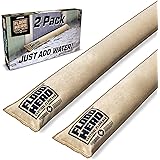Assessing Your Space
Understanding Your Property
First off, you really need to take a good look at your property. Is there enough space for a shelter? Locating an appropriate area is crucial; ideally, it should be in a low-traffic zone. You don’t want it too close to any large trees that could potentially fall during a storm, or too near to fences or walls which may collapse. Trust me, safety first!
When assessing your space, consider the ground condition. A flat area is more amenable for building, while uneven terraces might give you a headache. It’s also worth thinking about access. If you need to haul materials or get to safety fast, knowing the best route is key.
Finally, think about proximity to utilities. Do you have water and electricity nearby? While you may not need power for your emergency shelter, having water access can be a lifesaver!
Choosing Your Materials
Basic Materials
You want to use materials that are both sturdy and accessible. In my personal experience, I’ve found that plywood and tarp are usually the go-to materials. They’re inexpensive and can be found at most home improvement stores. A combination of these can keep your shelter weather-resistant while maintaining ventilation.
Don’t neglect insulation! Depending on your area’s climate, having insulation will keep the temperature regulated. Think about using foam boards or even thick blankets to add extra warmth. The last thing you want is to freeze in an emergency situation!
Also, keep an eye out for recycled materials. Old furniture, pallets, or discarded building materials can save you a ton of cash. Plus, you’re doing a bit for Mother Earth while you’re at it. Win-win!
Designing Your Shelter
Layout Considerations
The layout of your shelter can greatly influence its function. For example, a simple design is easiest to construct and maintain. I usually recommend a classic A-frame or a small cabin design. These are not only practical but structurally sound against strong winds.
Keep the layout flexible. Just because you drew it out doesn’t mean it has to be that way! Leave some open space for maneuvering around. Being able to comfortably move within the shelter will make a world of difference when things get intense.
== > What if ... Get a FREE Subscription to PREPARE
Make sure you include an exit point! In case of emergencies, having a second entrance can be your lifeline. Safety is paramount, and planning for that will never be a wasted effort.
Preparing for Comfort and Safety
Essentials to Include
Preparing your shelter goes beyond just building it; you need to stock it too! When I set mine up, I made sure to include essentials like non-perishable food and water. Canned goods, dried fruit, or MREs will keep you sustained.
Get Preparedness and Self-Reliance Tips. Subscribe Now!
Don’t forget about first-aid kits! Injuries can happen at any time, especially in emergencies. Keep a basic kit in the shelter, and add any specific medications you or your family might need. It’s better to have it and not need it rather than need it and not have it.
Another comfort item I highly recommend is a source of warmth like blankets or even a small camping stove. You never know how long you might need to stay there. Resilience is often about endurance! Plus, a cozy shelter makes everything a bit easier.
Regular Maintenance and Updates
Keeping Your Shelter Ready
Alright, so you’ve picked a spot, built the shelter, and stocked it. But just like any responsible adult, you need to check in on it! Every few months, I revisit my emergency shelter to see if it’s still up to snuff.
Inspect any weathered materials or signs of wear. Plywood can deteriorate, and tarps can develop holes over time. If you notice any issues, fix them right away. Remember, you’re aiming for a zero-stress situation when you need this shelter; don’t let neglect become a problem!
Keep your supplies updated too. Rotate food items to ensure they’re within their expiration dates, and replenish necessary first-aid supplies as needed. Think of it as a little emergency drill you conduct every now and then!
FAQs
1. What should I prioritize when selecting a site for my shelter?
Look for space that’s flat, away from trees that could fall and near access to resources like water.
2. How can I make my shelter more weather-resistant?
Using materials like plywood and tarps will help. Also consider insulation depending on your local climate.
3. Are there specific items I should always have stored in my emergency shelter?
Definitely! Always keep non-perishable food, a first-aid kit, ample water, and blankets for warmth.
4. How often should I check and maintain my shelter?
It’s a good practice to check on it every few months and ensure materials are in good shape and supplies are fresh.
5. Can I use recycled materials for construction?
Absolutely! Recycled materials can be sturdy and cost-effective. Just make sure they’re safe and suitable for building.






